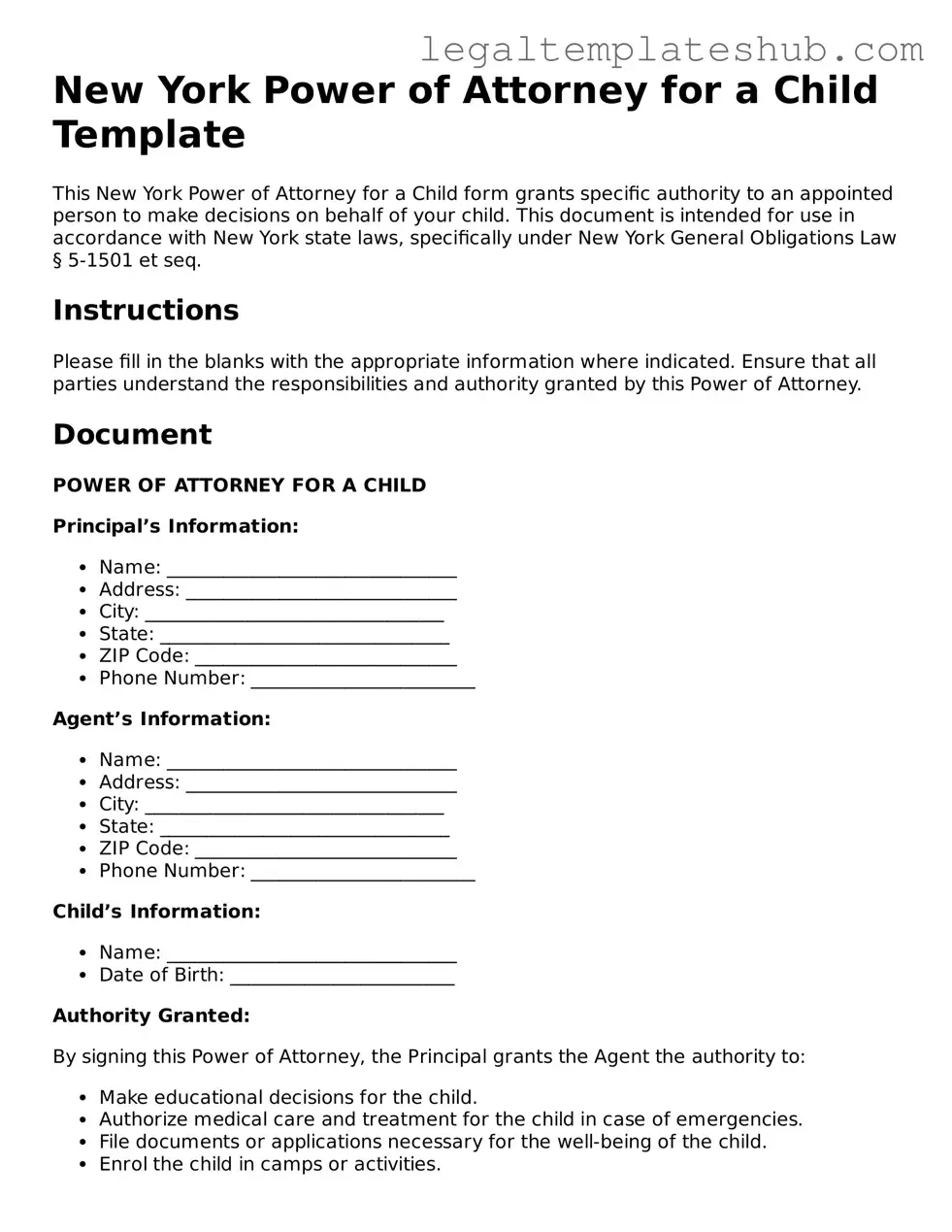Printable Power of Attorney for a Child Document for New York
The New York Power of Attorney for a Child form allows a parent or guardian to designate another adult to make decisions on behalf of a minor child. This legal document is essential for ensuring that a trusted individual can act in the child's best interests when the parent is unavailable. Understanding how to properly fill out this form is crucial for safeguarding your child's welfare; click the button below to get started.
Access Editor
